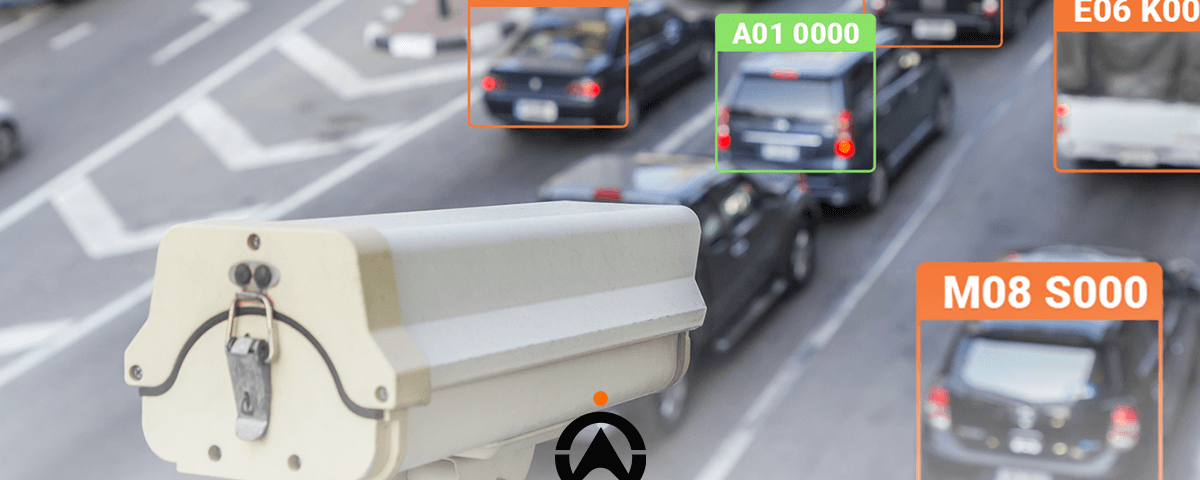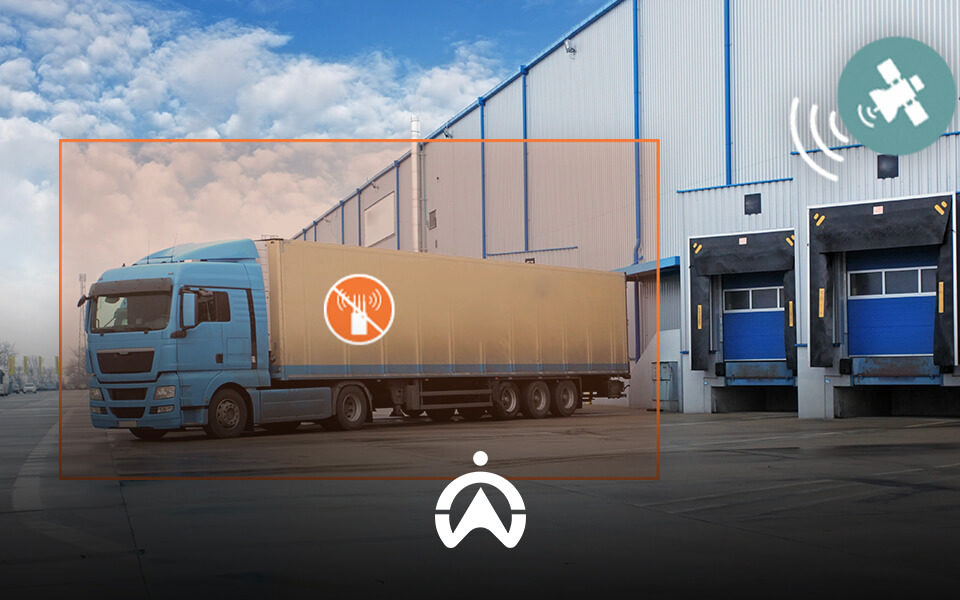Number Plate Recognition: The Game-Changing Technology for Vehicle Tracking
Picture this, you pull up to the boom gate in a parking and seconds later the boom just magically opens. You don’t even need to press a button on a machine for a ticket. And the same happens when you exit, you simply just pull up and drive through.
That’s the power of number plate recognition (NPR) technology.
This is just one example of how NPR can make your life a breeze. In this blog, we will explore ways this advanced piece of tech works with other software like vehicle tracking to assist in fleet management.
Strap in, let’s go.
What is number plate recognition (NPR)?
There are a few technological advancements used in today’s world that not only benefit businesses but can be helpful to everyday motorists as well — number plate technology is one of them.
Number plate recognition, also known as Automatic Number Plate Recognition (ANPR), is a sophisticated system that uses cameras and advanced software that automatically captures, reads, and stores a vehicle’s licence plate information for future use.
Decoding NPR technology: How does it work?
Number plate recognition works through a combination of cameras, optical character recognition (OCR) software, and database technology.
Let’s use the parking lot example mentioned above. NPR reads and processes your vehicle’s number plate information through cameras. It automatically records entry and exit times, calculates parking fees, and enhances parking management, all without the hassle of physical tickets or social interaction.
Here are the key technologies that make NPR tick:
1. Vehicle number plate detection
This is one of the core technologies that power NPR. It essentially involves identifying, recognising, and extracting the information from licence plates captured through cameras.
- Image screening. Specialised cameras capture images of licence plates which are then processed to enhance quality and readability.
- Camera capture: Specialised cameras equipped with infrared or visible light take pictures of licence plates as vehicles drive by or pass through a specific area, like toll gantries, parking lots, or intersections.
- Image pre-processing: These images undergo adjustments to enhance quality, reduce noise and make them clear enough to read. This is necessary, especially if the image was taken in different lighting conditions or at high speeds.
- Optical character recognition (OCR): This software analyses the images to identify and extract the alphanumeric characters on the licence plate. It works by detecting the plate within the image, breaking down individual characters, and understanding their shapes and patterns.
- Character recognition: Once the characters are extracted, the OCR software interprets them to determine the licence plate number. This step may involve pattern-matching algorithms and machine-learning techniques to improve accuracy, especially for distorted or obscured characters.
- Database comparison: The recognised licence plate number is then compared against a database of known or registered plates, containing information like ownership, registration status, violations, or other relevant data.
- Alerts and actions: Whether it’s an expired registration or outstanding violations, the system triggers actions like alerts, generates tickets, opens gates, or records entry/exit times. The exact response depends on how NPR technology is used.
2. Recognition system:
After OCR processing uses algorithms to analyse character shapes, fonts, and spacing to find individual characters, the data goes through verification.
- Verification and error correction: Recognised characters are validated and cross-checked for consistency and adherence to legal plate formats, this helps in error correction.
3. Joint Information System platform:
While NPR is the process of capturing, recognising, and processing vehicle licence plates, JIS acts as a central platform to share NPR data from various sources. This helps connect the data to end users, like law enforcement, who need it.
Here’s how different entities use it.
- Law enforcement: Licence plate data might be compared to stolen vehicle databases, traffic violation records, or access control systems.
- Fleet management: Information can be linked to specific vehicles, drivers, and route optimisation software.
- Transportation: Authorities could use JISP data from NPR systems to monitor traffic flow and identify potential congestion points.
- Parking management: Plate data can be verified against authorised user lists or payment systems.
NPR helps automate the job of keeping track of cars on the road by spotting important information on licence plates and storing the data either to send to a manager or use at a later date to make sure everything is running smoothly.
.png)
Different types of NPR systems
Number Plate Recognition (NPR) technology has become a versatile tool across industries, offering valuable insights and automating processes. With different types of NPR systems available, choosing the right one can feel a bit overwhelming. Here are examples of a few different NPR systems:
Fixed camera system: These are stationary cameras installed at specific locations, such as entry/exit points of facilities like toll gantries or along roadways. These are designed to capture and recognise licence plates for various purposes, like toll collection, traffic management, and security surveillance.
Mobile camera system: These consist of cameras mounted on vehicles, such as police cars or enforcement vehicles, for on-the-go licence plate recognition. This allows authorities to patrol areas and identify vehicles of interest, enforce traffic laws, or track stolen vehicles.
Cloud-based NPR system: Ideal for managing extensive camera networks or requiring advanced analytics. When dealing with vast networks and complex data analysis, cloud-based NPR systems use the power of cloud servers for processing and recognition, offering unmatched scalability and flexibility.
Edge-based NPR systems: In contrast to cloud-based systems, edge-based NPR systems perform the processing and recognition of licence plates at the “edge” of the network, meaning they scan the plates directly in the cameras themselves. This can offer advantages in terms of real-time processing and data privacy.
When choosing the right system for your business, consider your application, the industry you’re in and the budget.
How accurate is number plate recognition for fleet and vehicle tracking?
The accuracy of Number Plate Recognition (NPR) for fleet and vehicle tracking is generally high, ranging from 95% to 99% in ideal conditions.
However, some factors can affect the accuracy of the system.
Image quality: High-resolution cameras with good lighting provide clearer images, leading to higher accuracy. So if the image is blurred, low-resolution, or has poor lighting conditions, the system’s accuracy decreases.
Plate condition: Dirty, damaged, or obscured licence plates can make it difficult for the system to read characters correctly. Weather conditions; rain, snow, fog, or extreme temperatures can also poorly affect image accuracy.
Camera angles: Ideally, cameras should capture plates head-on or slightly angled. Extreme angles can distort characters and reduce accuracy.
Software technology: Advanced algorithms and machine learning play a big role in character recognition. Newer and more sophisticated software generally has higher accuracy.
How do businesses use NPR technology and how does it benefit them?
Imagine this, your delivery truck zooms past a checkpoint and in split seconds its licence plate is instantly captured and recognised. No more handwritten logs, no more time-consuming manual entries. NPR accurately and seamlessly tracks your fleet, streamlining operations and saving you precious time and money.
This seems like technology every company should have, one way or another.
Businesses across industries, from logistics and deliveryto transport and rental companies, can enjoy the advantages this system can provide and improve their fleet management.
Here’s how NPR can transform fleet management in your business:
Easy tracking: Say goodbye to manual logs. NPR automatically tracks your entire fleet, giving you instant access to vehicle locations and detailed historical data. No more guessing – you’ll always know where your vehicles are, ensuring smooth operations and informed decisions.
Smooth toll gantries: No more waiting at toll booths. NPR identifies your vehicles, ensuring automatic payments and reducing delays. This means smoother journeys, happier drivers, and less fuel consumption, saving you time and resources.
Better security: Worried about vehicle theft? NPR keeps watch, alerting you to unauthorised access or theft attempts. With real-time monitoring, you can intervene quickly, protecting your assets and avoiding costly losses.
Stolen vehicle recovery: Use advanced number plate recognition (ANPR) to swiftly locate your stolen vehicles. ANPR cameras capture and interpret number plates of passing cars, when your stolen vehicle’s number plate is detected, it triggers an alert, enabling you to track and recover the vehicle in real-time.
Compliance made simple: Keeping up with regulations can be tough. NPR helps by monitoring speed limits and access rules, ensuring your fleet stays compliant. This proactive approach minimises fines and keeps your operations running smoothly.
Informed decisions: NPR provides valuable insights into driver behaviour, route efficiency, and fuel usage. Use this data to optimise routes, reduce idling, and implement targeted training – all leading to cost savings and improved efficiency.

Why Cartrack’s SVR technology and NPR are the perfect recipe for ultimate fleet safety
In a landscape where vehicle theft is on the rise, especially in Nigeria, protecting your assets has never been more critical.
In response to this growing challenge, Cartrack Nigeria offers several safety features like 24/7 vehicle tracking, geofence, smart cameras, and stolen vehicle recovery (SVR) paired with NPR technology. This is our way of safeguarding vehicles with swift recovery in the unfortunate event of theft.
Cartrack Nigeria takes NPR technology to new heights by seamlessly integrating it with our own GPS tracking and fleet management software and using it to uphold our high stolen vehicle recovery rate.
How? If you report your vehicle as stolen, our 24/7 control room and recovery teams leverage live vehicle tracking from our installed unit and NPR technology to show where the vehicle’s number plate was last seen by cameras, so we can track down the stolen vehicle in real time and attempt to recover it swiftly.
“NPR technology is one of the solutions used by Cartrack to achieve an industry-leading stolen vehicle recovery rate of over 90%!” — Agent Diederiks, Recovery Department, Cartrack
Use Cartrack and NPR technology for accurate vehicle tracking
Tired of inaccurate fleet tracking and relying on outdated information? Upgrade your business to Cartrack’s complete fleet management solutions, along with NPR technology, for accuracy at every turn.
Ready to experience the power of NPR-integrated fleet management?
Contact Cartrack today to learn more and start optimising your fleet operations.


